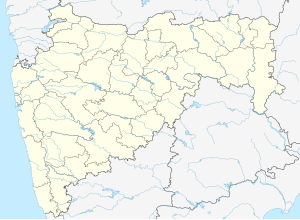Gawilgarh
| Gawilghur fort | |
|---|---|
| गाविलगड किल्ला | |
| Amravati District, Maharashtra | |

Gavilgad fort walls
|
|
| Coordinates | 21°22′56″N 77°20′2″E / 21.38222°N 77.33389°E |
| Type | Hill fort |
| Height | 1,103 m (3,619 ft) ASL |
| Site information | |
| Owner | Government of India |
| Controlled by | Muzaffarid dynasty, Marathas, East India Company |
| Open to the public |
Yes |
| Site history | |
| Built | 1425-26 AD |
| Built by | Ahmed Shah I |
| In use | 1425-1803 AD |
| Materials | Stone |
Gawilghur (also Gawilgarh or Gawilgad) was a well-fortified mountain stronghold of the Maratha Empire north of the Deccan Plateau, in the vicinity of Melghat Tiger Reserve, Amravati District, Maharashtra. It was successfully assaulted by an Anglo-Indian force commanded by Arthur Wellesley on the 15 December 1803 during the Second Anglo-Maratha War. In popular culture, the campaign to take Gawilghur forms the background of the novel Sharpe's Fortress by Bernard Cornwell, the third in a series of books covering the eponymous hero's time in the British army in India during the Napoleonic era.
The fort takes its name from the Gawli (cow herds) who inhabited the Berar (modern day Amravati) for centuries. Earlier the fort was likely just made of mud as were several such areas in the region. The exact date of construction is not known but the Persian historian, Firishta, records that Ahmed Shah Wali, the ninth king of the Muzaffarid dynasty built Gawilgarh when he was encamped at Ellichpur in 1425. Likely this was the date when major fortification was carried out.
In 1803 during the 2nd Maratha War the fort was besieged by Arthur Wellesley (later Duke of Wellington). After two failed attempts at the main gate by British and Sepoy companies, and many casualties, Captain Campbell led the 94th Scottish Brigade (light company) up the ravine dividing the inner and outer forts and into the inner fort by escalade. The Scots then forced the northern gatehouse and opened the many gates, allowing the remaining British forces entry. The British suffered few casualties in the final assault (approx. 150). The fortress was returned to the Marathas after making peace with the British but they abandoned it.
...
Wikipedia

